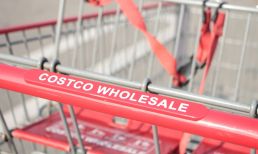Industries from goods and beverage to medical supplies to auto manufacturing are feeling the squeeze of disruptions in what some experts are calling a crisis.
Yet taking stock of an organization’s global supply chain can be overwhelming. Indeed, Lois Coatney, partner and president of ISG GovernX, said businesses face a major roadblock to supply chain risk management right from the get-go.
“They’re not even sure how many suppliers they have, which is surprising,” she told PYMNTS in a recent interview. “They have general information about their suppliers because they cut them a check. But as far as what’s the content of services those suppliers provide, understanding the locations they do work in, understanding the level of risk they’re bringing to the environment, they really don’t have visibility into that.”
Businesses may have procrastinated this monumental undertaking, but the current volatile climate means they can no longer afford to hold off on developing a more robust supply chain risk mitigation strategy.
Identifying the Risk Exposures
Advertisement: Scroll to Continue
With some organizations working with tens of thousands of suppliers, it’s not always feasible for firms to connect with every single vendor to evaluate their risk exposures. Today especially, time is of the essence, and Coatney said businesses must prioritize identifying their biggest areas of risk exposure first.
“Clients are in a very rapid state of getting their arms around what they have, where those suppliers are, how important their services are to their business,” she said, adding that firms should pinpoint the top 20 percent to 30 percent of their most significant risk exposures within the supply chain.
That’s particularly difficult as organizations come to understand that risk is not only presented through the immediate supplier base, but through Tier 2 and 3 suppliers further down the supply chain.
This can quickly catch businesses off-guard, especially as emerging regulations come into play to combat financial crime and modern slavery. Coatney pointed to the example of Australia’s Modern Slavery Act, which requires businesses to report to the government on slavery risks within their supply chains.
A business may assume this is not an issue amongst their vendors, but even use of services from providers like Microsoft, Google and Apple, which have faced allegations of use of slavery to make their products, increases risk.
“When you think about your supply chain, you have to think about that awareness,” said Coatney. “It’s a moment of, ‘Wow, my world is a little bit bigger than just the people who I sit across the table from.'”
Preventing Knee-Jerk Reactions
The coronavirus pandemic has added an extra layer of pressure to mitigate supply chain risk on top of the challenges of maintaining compliance and managing suppliers.
During times of such volatility, Coatney said it’s easy for organizations to make knee-jerk reactions about their vendors, particularly when it comes to payments.
“One client that’s really struggling with COVID-19 right now are immediately going out to their suppliers and saying, ‘We’re going to go from 60 days to 120-day payment terms because of cash flow issues,'” she recalled, adding that she’s seeing more organizations withholding payment or enforcing credit to incentivize their vendors to fulfill their contractual obligations and provide consistent services.
It’s a delicate balance that can quickly backfire, however. Withholding payment to vendors means those suppliers can run into cash flow challenges and risk going out of business, and even that would, in turn, elevate risk for their corporate customers that suddenly have to source from new vendors.
Working Together
Collaborating with third-party service providers that can support supply chain risk mitigation is critical in preventing rash, short-sighted decision making. Technology can arm businesses with valuable data analytics to assess their vendor performance, enforce contractual agreements, strategize payment plans and benchmark their standing against industry peers.
While ISG’s GovernX solution is able to assess data based on the information of a corporate buyer as well as the data that buyer obtains from their supplier through documents like invoices, Coatney said the true value is in placing that information in the broader market context. Being able to not only service corporate buyers, but their suppliers as well, also means the GovernX solution has access to a trove of valuable insight into how businesses are performing in the current climate — and aid in their strategy development moving forward.
Each business is different, but Coatney offered a word of advice that can be applicable to everyone today: Don’t panic, and work together.
“We’re advising our clients to take a step back. Let’s not make rash decisions but work collectively as partners to recognize that clients are struggling, and suppliers are struggling,” she said, adding that organizations should take a longer-term stance as they make their next moves. “Now is not the time to withhold payment, now is not the time to enforce credit. Let’s make sure we’re keeping things rolling — and after that, we can determine if there needs to be any sort of payment adjustment.”




